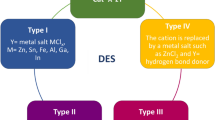Abstract
Solubility enhancement has been achieved by facilitated hydrotropy for the dimethyl isosorbide (DMI) / benzyl alcohol / water system. Facilitated hydrotropy has been studied via three different approaches: the solubilization in water of a hydrophobic dye, the evolution of the surface tension and dynamic light scattering, all as a function of the benzyl alcohol concentration. The facilitated hydrotropy has been rationalized from the solubilization properties of the system according to the ratio between the insoluble hydrotrope (here benzyl alcohol, a preservative used in parenteral injections) and the bio-sourced co-solvant (here the dimethyl isosorbide ether, DMI, a solvent used in pharmaceutical formulation). The presence of self-associated nanostructures has been detected by dynamic light scattering (DLS). It appears that the cosolvent, DMI, has an antagonistic action: DMI increases the facilitated hydrotrope (benzyl alcohol) solubility in the aqueous solution (favoring solute solubilization) but simultaneously decreases the hydrotropic efficiency of benzyl alcohol.









Similar content being viewed by others
References
Neuberg, C.: Hydrotropic phenomena. I. J. Chem. Soc., Abstr. 110, 555 (1916)
Saleh, A.M., El-Khordagui, L.K.: Hydrotropic agents: a new definition. Int. J. Pharm. 24, 231–238 (1985)
Bauduin, P., Renoncourt, A., Kopf, A., Touraud, D., Kunz, W.: Unified concept of solubilization in water by hydrotropes and cosolvents. Langmuir 21, 6769–6775 (2005)
Friberg, S.E., Lochhead, R.V., Blute, I., Waernheim, T.: Hydrotropes—performance chemicals. J. Dispers. Sci. Technol. 25, 243–251 (2004)
Coffman, R.E., Kildsig, D.O.: Hydrotropic solubilization-mechanistic studies. Pharm. Res. 13, 1460–1463 (1996)
Matero, A.: Hydrotropes. In: Handbook of Applied Surface and Colloid Chemistry, vol. 1, pp. 407–420. Wiley-VCH, New York (2002)
Gupta, G.D., Jain, S., Jain, N.K.: Formulation of an aqueous injection of flurbiprofen. Pharmazie 52, 709–712 (1997)
Gupta, B., Mishra, D.S., Cheng, C.H., Yalkowsky, S.H.: Solubility of anthracene in complex solvent systems. Toxicol. Environ. Chem. 33, 7–21 (1991)
Yalkowsky, S.H.: Solubility and Solubilization in Aqueous Media. Am. Chem. Soc., Washington (1999)
Simamora, P., Alvarez, J.M., Yalkowsky, S.H.: Solubilization of rapamycin. Int. J. Pharm. 213, 25–29 (2001)
Wang, Y.-C.J., Kowal, R.R.: Review of excipients and pH’s for parenteral products used in the United States. J. Parenter. Drug Assoc. 34, 452–462 (1980)
Strickley, R.G.: Parenteral formulations of small molecules therapeutics marketed in the United States. Part I. PDA J. Pharm. Sci. Technol. 53, 324–349 (1999)
O’Neil, M.J.: The Merck Index: An Encyclopedia of Chemicals, Drugs, and Biologicals, 13th edn. Merck and Co., Inc., Whitehouse Station (2001)
Durand, M., Zhu, Y., Molinier, V., Féron, T., Aubry, J.M.: Solubilizing and hydrotropic properties of isosorbide monoalkyl- and dimethyl-ethers. J. Surfactants Deterg. 12, 371–378 (2009)
Cheema, M.A., Siddiq, M., Barbosa, S., Castro, E., Egea, J.A., Antelo, L.T., Taboada, P., Mosquera, V.: Compressibility, isothermal titration calorimetry and dynamic light scattering analysis of the aggregation of the amphiphilic phenothiazine drug thioridazine hydrochloride in water/ethanol mixed solvent. Chem. Phys. 336, 157–164 (2007)
Balasubramanian, D., Srinivas, V., Gaikar, V.G., Sharma, M.M.: Aggregation behavior of hydrotropic compounds in aqueous solution. J. Phys. Chem. 93, 3865–3870 (1989)
Drapeau, J., Verdier, M., Touraud, D., Kröckel, U., Geier, M., Rose, A., Kunz, W.: Effective insect repellent formulation in both surfactantless and classical microemulsions with a long-lasting protection for human beings. Chem. Biodivers. 6, 934–947 (2009)
Acknowledgements
Roquette Frères is gratefully acknowledged for financial support in the research program concerning dimethyl isosorbide, and for providing pure samples of isosorbide and dimethylisosorbide. Dimethyl isosorbide (DMI) is part of the BIOHUB program (http://www.biohub.fr). The French CNRS (Centre National de la Recherche Scientifique) is also acknowledged for promoting German–French cooperation through a PICS (Projet International de Coopération Scientifique) program.
Author information
Authors and Affiliations
Corresponding author
Appendix: Supplementary materials
Appendix: Supplementary materials
Rights and permissions
About this article
Cite this article
Durand, M., Stoppa, A., Molinier, V. et al. Toward the Rationalization of Facilitated Hydrotropy: Investigation with the Ternary Dimethyl Isosorbide / Benzyl Alcohol / Water System. J Solution Chem 41, 555–565 (2012). https://doi.org/10.1007/s10953-012-9814-7
Received:
Accepted:
Published:
Issue Date:
DOI: https://doi.org/10.1007/s10953-012-9814-7




